Matrix Multiplication On CCR Cluster CSE 633 Parallel Algorithms Spring 2014
advertisement
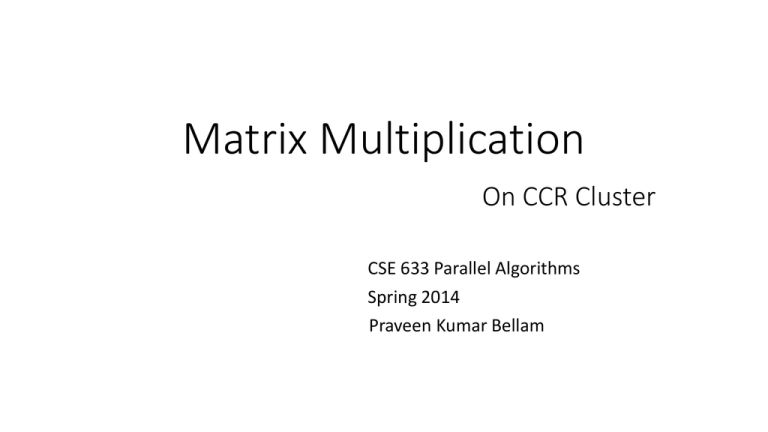
Matrix Multiplication On CCR Cluster CSE 633 Parallel Algorithms Spring 2014 Praveen Kumar Bellam Outline • Sequential Algorithm • Parallel Algorithm • Parallel Implementation Using MPI • Parallel Implementation Using Open MP • Results Input: Two square matrices A, B of size n × n Output: The matrix product Cn × n = A × B Matrix Multiplication (A, B) for i = 1 to n do for j = 1 to n do cij = 0 for k = 1 to n do cij = cij + aikbkj end for end for end for Θ(n3) Parallel Algorithm – Design Considerations • Distributing the data • Local computation • Communicating the data (Send/Receiving) • Gathering the results Parallel Algorithm 1. Divide the input matrices into P blocks. P is the number of processors available for computation. 2. Create a matrix of processes of size P1/2 x P1/2 so that each process can maintain a block of A matrix and a block B matrix. 3. Each block is sent to each process by determining the owner, and the copied sub blocks are multiplied together and the results added to the partial results in the C sub-blocks. 4. The A sub-blocks are rolled one step to the left and the B sub-blocks are rolled one step upwards. 5. Repeat the process, P1/2 times. Divide input matrices into P sub blocks, and distribute the data a1 a2 a3 a4 b1 b2 b3 b4 a5 a6 a7 a8 b5 b6 b7 b8 a9 a10 a11 a12 b9 b10 b11 b12 a13 a14 a15 a16 b13 b14 b15 b16 Input Matrix A4 x 4 P1 P2 P3 P4 Input Matrix B4 x 4 a1 a2 a3 a4 b1 b2 b3 b4 a5 a6 a7 a8 b5 b6 b7 b8 a9 a10 a11 a12 b9 b10 b11 b12 a13 a14 a15 a16 b13 b14 b15 b16 P1 P3 Each processor, performs local matrix multiplication of blocks. P2 c11 c12 c13 c14 c15 c16 c17 c18 P4 c19 c110 c111 c112 c113 c114 c115 c116 Output Matrix C4 X 4 a1 a2 a3 a4 b1 b2 b3 b4 a5 a6 a7 a8 b5 b6 b7 b8 a9 a10 a11 a12 b9 b10 b11 b12 a13 a14 a15 a16 b13 b14 b15 b16 P1 P3 Each processor, sends A’s sub block to the processor on the left, B’s sub block to the processor above. P2 c11 c12 c13 c14 c15 c16 c17 c18 P4 c19 c110 c111 c112 c113 c114 c115 c116 Output Matrix C4 X 4 a3 a4 a1 a2 b9 b10 b11 b12 a7 a8 a5 a6 b13 b14 b15 b16 a11 a12 a9 a10 b1 b2 b3 b4 a15 a16 a13 a14 b5 b6 b7 b8 P1 P2 P3 P4 Again, perform local matrix multiplication and add it to the result set. C11+C21 C12+C22 C13+C23 C14+C24 C15+C26 C17+C27 C18+C28 C16+C26 C19+C29 C110+C210 C113+C213 C114+C214 C111+C211 C112+C212 C115+C215 C116+C216 Matrix Size MPI Results NUMBER OF PROCESSORS 2000 3000 4000 5000 6000 7000 8000 1 24 85 280 464 1125 1732 2443 4 9.43 23.70 70.90 256.62 588.38 988.20 1297.69 9 6.85 20.50 42.56 144.59 390.40 488.72 620.96 16 5.20 15.10 35.16 97.14 281.76 359.46 257.72 25 1.33 6.80 14.79 67.08 107.91 235.77 186.07 36 4.20 12.70 24.01 146.51 187.40 380.78 580.31 49 5.72 13.78 36.78 153.08 192.66 413.12 603.64 64 6.80 18.30 44.43 158.65 202.74 419.35 613.37 X - Axis : Matrix Size N X N Y- Axis : Running Time in Seconds 3000 2500 2000 1500 1000 500 0 2000 3000 4000 1 4 9 5000 16 25 6000 36 49 7000 64 8000 Matrix Size NUMBER OF PROCESSORS 2000 3000 4000 5000 OpenMP Results 6000 1 24 85 280 464 1125 2 11.36 44.35 132.12 267.05 403.06 4 8.23 31.66 99.08 206.26 362.38 6 6.57 23.43 71.32 139.01 253.85 8 4.44 15.66 57.31 115.05 204.02 10 3.26 9.30 45.54 88.13 162.54 12 2.44 7.30 37.75 86.69 127.68 14 2.37 6.02 25.47 52.52 109.34 Observations & Learnings • Increasing the processors doesn’t always reduce the running time. • Need to experimentally identify the point where communication costs are taking over the local computation. • Running times depend on how the nodes got allocated on CCR cluster. • Need to specify in the SLURM Script about the node details. • Got good understanding about parallelization. • Next step is to analyze and understand the semantics of parallel architectures practically by simulating the algorithms. References • Gupta, Anshul; Kumar, Vipin; , "Scalability of Parallel Algorithms for Matrix Multiplication," Parallel Processing, 1993. ICPP 1993. International Conference on , vol.3, no., pp.115-123, 16-20 Aug. 1993 doi: 10.1109/ICPP.1993.160 URL: http://ieeexplore.ieee.org/stamp/stamp.jsp?tp=&arnumber=4134256 &isnumber=4134231
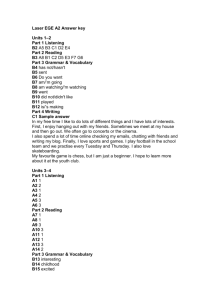
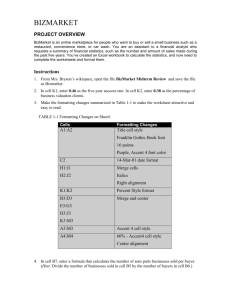
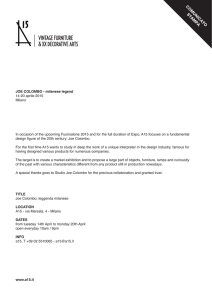
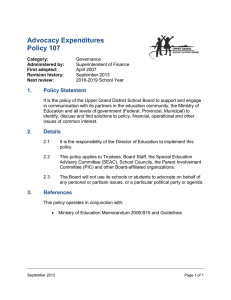
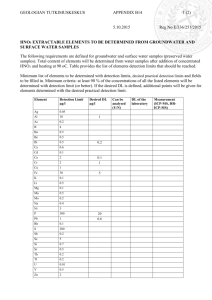
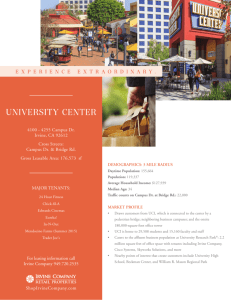
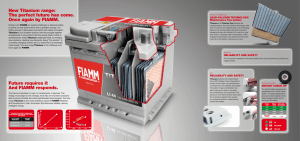
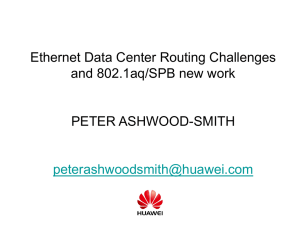
![Measurement of the Mass Difference between t and t[over- bar] Quarks](http://s2.studylib.net/store/data/012101994_1-37241c71f6aef27ef4a9f02b9126a637-300x300.png)